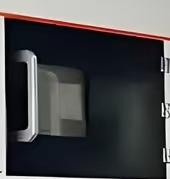What Are You Looking For?
What Are You Looking For?
In the manufacturing and quality control of industrial electrical equipment, ensuring the integrity of metal components is of utmost importance. The X-ray Flaw Detector emerges as a powerful tool that can penetrate the surface of materials and reveal internal defects that are invisible to the naked eye. This article will provide a detailed introduction to the X-ray Flaw Detector, highlighting its key features, parameters, and the benefits it offers.
Item No. :
HJ-IEPTE-007Minimum Order Quantity (MOQ) :
1 setPayment Method :
L/C,T/T,PayPalPrice :
NegotiatableProduct Origin :
TurkiyeSupply Ability :
1 sets per 2 monthLead Time :
60 Working DaysConventional packaging :
PlywoodThe X-ray Flaw Detector utilizes X-ray radiation to examine the internal structure of industrial electrical equipment components. By passing X-rays through the material and detecting the variations in their attenuation, it can identify cracks, voids, inclusions, and other defects within the metal. This non-destructive testing method allows manufacturers to assess the quality of components without causing any damage, ensuring the reliability and safety of the final products.
Key Testing Parameters:
|
Testing Parameter |
Description |
Importance |
Simulated Values |
|
X-ray Tube Voltage |
Determines the energy of emitted X-rays, usually ranging from a few kV to several hundred kV. |
Controls X-ray penetration ability for different material thicknesses and thorough defect detection. |
Min: 30 kV, Max: 200 kV |
|
X-ray Tube Current |
Affects the intensity of the X-ray beam. |
Adjusts the X-ray beam intensity to influence image quality and defect detectability. |
5 mA - 15 mA |
|
Focal Spot Size |
Determines the sharpness of the X-ray image. |
Ensures clear images for accurate defect analysis, with smaller sizes for better resolution. |
Small: 0.3 mm, Large: 1.5 mm |
|
Detector Resolution |
Measures the detector's ability to distinguish small details in the X-ray image, in lp/mm. |
Enables detection of fine defects for comprehensive component quality assessment. |
20 lp/mm - 60 lp/mm |
|
Imaging Area |
Defines the size of the area captured in a single X-ray image. |
Provides flexibility in testing components of different sizes and customizing inspection strategies. |
Small: 4 cm × 4 cm, Large: 25 cm × 30 cm |
|
Exposure Time |
The duration the X-ray beam is applied to the sample. |
Balances testing efficiency and image quality for efficient and accurate defect detection. |
Min: 1 s, Max: 8 s |
Operation and Functionality:
The X-ray Flaw Detector is designed with user-friendly features. It typically has an intuitive control panel that allows operators to easily set the X-ray tube voltage, current, exposure time, and other parameters. The sample is placed on a movable platform, and the X-ray source and detector are positioned accordingly. After the X-ray exposure, the detector captures the image, which is then displayed on a monitor. Advanced models may offer image processing and analysis software that can enhance the image contrast, measure defect sizes, and generate detailed reports.
Benefits of Using the X-ray Flaw Detector:
Enhanced Product Quality: By detecting internal defects early in the manufacturing process, manufacturers can take corrective actions such as repairing or rejecting defective components. This significantly reduces the risk of product failures during operation, improving the overall quality and reliability of the industrial electrical equipment.
Cost Savings: Identifying and addressing defects before the final assembly stage can prevent costly rework or product recalls. By avoiding the use of defective components, manufacturers can also reduce material waste and production costs.
Safety Assurance: Ensuring the integrity of metal components in electrical equipment is crucial for preventing potential safety hazards such as electrical malfunctions or mechanical failures. The X-ray Flaw Detector helps in maintaining a high level of safety in the workplace and protecting the end-users.
Compliance with Standards: Many industries have strict quality and safety standards that require the use of non-destructive testing methods like X-ray inspection. Using the X-ray Flaw Detector enables manufacturers to comply with these standards and gain a competitive edge in the market.

In conclusion, the X-ray Flaw Detector is an indispensable tool for the industrial electrical equipment manufacturing industry. Its advanced features, precise parameters, and numerous benefits make it a valuable investment that can significantly enhance the quality, safety, and efficiency of the manufacturing process. Don't miss out on the opportunity to optimize your production with this powerful device.